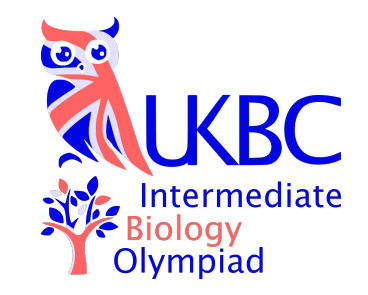全球权威的生物学术组织 鼓励学生挑战课堂以外的生物学知识 增加世界名校医学、生物等理科专业申请优势

英国生物测评(中级)IBO介绍
英国生物测评(中级)(Intermediate Biology Olympiad)面向高一、高二年级(GCSE和A1),是英国生物测评的初阶活动。不仅考察学生的生物学知识,还鼓励他们在校外继续学习生物科学。成绩优秀者将增加世界名校医学、生物等理科专业申请优势。
英国中级生物奥林匹克活动由英国生物奥林匹克委员会组织,由英国皇家生物学会管理。从 2020 年起正式授权 ASDAN 中国(阿思丹)成为其在中国的承办单位。
英国皇家生物学会(简称 RSB), 总部位于伦敦市中心,拥有 16000 多名会员,汇聚了 100 多个国家生物界的著名科学家和生物研究人员,为全球极具影响力的生物学术组织之一。

IBO比赛相关信息活动规则
语言:中英文
考试时间:2022年 11 月 13 日(周日)14:00-15:00(60分钟)
报名截止时间:2022年11月2日
参赛资格:任意年级高中生
形式:个人赛
范围∶25%动物解剖学及生理学,20%细胞生物学,15%遗传与进化,15%植物解剖学及生理学,15%生态学,5%动物行为学,5%生物分类学
内容∶约72道选择题与填空题,总分72分(注∶每年题目数量与题型、总分略有变化)
奖项设置
全球奖项:(全球代表统一排名)
金牌 Gold,2021 年分数线为:59.50,约前 7%
银牌 Silver,2021 年分数线为:55.11,约前 18%
铜牌 Bronze,2021 年分数线为:50.63,约前 38%
杰出奖 Highly Commended,2021 年分数线为:47.19,约前 54%
优秀奖 Commended,2021 年分数线为:44.05,约前 70%
*备注:该活动全球奖项评分规则如下:金奖、银奖、铜奖、杰出奖、优秀奖奖项将首先按照英国国籍学生的成绩分别以 总分排名约 5%、15%、30%、45%、60% 的比例划出得奖分数线,然后其他国家学生成绩不按照总分排名比例,而是直 接参照获奖分数线来决定是否得奖。
考试内容
中级生物奥林匹克竞赛的核心主题与AQA、Edexcel、OCR AS/A级的教学大纲相一致。
1. Biological Molecules
Concepts of monomers, polymers, condensation & hydrolysis reactions
Monosaccharides, e.g.andglucose, galactose, fructose, ribose
Di-/polysaccharides, e.g. sucrose, maltose, lactose, cellulose, starch (amylose, amylopectin)
Quantitative Benedict’s test, iodine test for starch
Glycerol, fatty acids (saturated and unsaturated), triglycerides, ester bond formation,phospholipids, emulsion test
Amino acids, levels of protein structure (including types of non-covalent bonds involved), peptidebond formation, Biuret test
Haemoglobin and collagen as examples of globular and fibrous proteins (detailed structure ofcollagen often omitted)
DNA and RNA structure and formation of phosphodiester bonds between nucleotides
Semi-conservative replication of DNA
Structure of ATP and basic role in cells
Enzymes: lock and key and induced fit models of action; effect of pH, temperature,enzyme/substrate concentration, inhibitors (competitive and non-competitive) (cofactors/coenzymes sometimes included)
Role of inorganic ions
Biologically important properties of water
2. Cell Structure
Structure of eukaryotic cells, including:
cell-surface membrane
nucleus (containing chromosomes, consisting of protein-bound, linear DNA, and one ormore nucleoli)
mitochondria
chloroplasts
Golgi apparatus and Golgi vesicles
lysosomes
ribosomes
rough endoplasmic reticulum and smooth endoplasmic reticulum
cell wall
cell vacuole
Structure of prokaryotic cells
Cytoskeleton sometimes included – usually just actin and tubulin
Manipulating magnification for light and electron micrographs (usually including use of graticules)
Use of stains in light microscopy
Characteristics of light and electron microscopes
Cell cycle – the main stages of mitosis and meiosis
Structure of the cell membrane, including phospholipids, glycoproteins, glycolipids, membraneproteins, cholesterol in the fluid mosaic model
Membrane transport: active transport, facilitated diffusion, carrier and channel proteins, diffusion,osmosis (using water potential terminology)
3. Immune System
Definition of antigen and structure and function of antibodies
Phagocytosis
Antigen presentation, stimulation of B cells, clonal selection and expansion, plasma cells
Role of T cells (normally highly simplified and restricted to helper T cells and cytotoxic T cells
Primary and secondary immune responses
Passive and active immunity
HIV as an example of a pathogen (other syllabuses may include other diseases such as cholera,measles, TB, flu)
Uses of monoclonal antibodies
4. a. Exchange Surfaces
SA:Vol relationships for cells and organisms, features of exchange surfaces and the need forcirculatory systems
Examples of gas exchange systems: human always included, often fish gills or insect trachea
Gas exchange in plants
Mechanism of ventilation in humans and structure of trachea epithelium
COPD and smoking
4. b. Circulatory Systems
Structure of single and double circulatory systems (sometimes also open/closed)
Structure and function of haemoglobin, including Bohr effect and transport of CO2 (sometimesalso fetal haemoglobin and myoglobin)
Structure of arteries, veins, capillaries
Structure of the mammalian heart, including valves
Electrical activity of the heart and role of AVN, SAN (sometimes ECG included)
Formation and composition of tissue fluid
CHD is on most syllabuses
4. c. Plant Transport
Structure of xylem
Cohesion-tension theory
Structure of phloem
Mass flow hypothesis
5. Molecular Genetics
Structure of chromosomes, DNA and genes
Role and structure of mRNA, tRNA and ribosomes
The genetic code, transcription and translation
Exons and introns and splicing of pre-mRNA
Mutations and the effect on proteins
Mutations as a source of genetic variation for natural selection
6. Biodiversity
Hierarchical nature of taxonomic systems
Three domains versus 5 kingdom classifications
Idea of a phylogenetic classification
Random and systematic sampling
Simpson’s diversity index













